Extraordinary Trade Show Displays: How to be Best in Show
The fundamentals of effective trade show displays boil down to your story, your staff, and your execution. Before and during the show, there will be plenty of distractions or gimmicks at other booths, but if you relate to your audience and to the context of the broader show, you won’t get lost in the din of the event.
The Best Story
 The best trade show displays tell a story—your story—clearly and engagingly. Vagaries, misdirection or over-generalized displays won’t do you or your brand justice. You have to assume that visitors have already been annoyed by other booths that take too long to understand. This doesn’t mean that you have to be boring or robotic in presenting your brand, but it should be relatively straightforward for people to ascertain your basic mission and offerings in about a minute. A clear and upfront story buys you time to expound on your latest projects, rather than clearing up confusion over the basics.
The best trade show displays tell a story—your story—clearly and engagingly. Vagaries, misdirection or over-generalized displays won’t do you or your brand justice. You have to assume that visitors have already been annoyed by other booths that take too long to understand. This doesn’t mean that you have to be boring or robotic in presenting your brand, but it should be relatively straightforward for people to ascertain your basic mission and offerings in about a minute. A clear and upfront story buys you time to expound on your latest projects, rather than clearing up confusion over the basics.
The Best Staff
Send some members of your staff around the show floor to explore other trade show displays. In this way, you’re taking advantage of your presence at the trade show by learning things you can only learn by actually being there. Pay particular attention to your competitors, of course. It’ll make the investment in the show that much more valuable.
When you’re knowledgeable about other displays, you can also anticipate visitors’ reactions, preempt their questions and explain how your services are different or superior to those of others on the floor.
The Best Technology
Remember that a trade show is powerful, old-fashioned, offline interaction. Even if you decide to use screens, computers or other gadgetry for demos, the particular presentations should be unique and unlike anything that a visitor can easily view online at home. At the same time, visitors to your display should be eager to go home and check out your site. The show doesn’t end when you pack up the display. If you present yourself right, it’s only the beginning.
How to Attract Your Ideal Visitor to Your Tradeshow Display
Attracting the ideal visitor to your trade show displays begins well before the day of the show. With a few proactive initiatives and show-day follow-up, you can leave less of your booth attendance to staff and start attracting potential customers.
Preshow Marketing
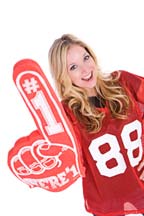 Preshow marketing can be an effective way of driving interest in your company. Many trade shows today have Twitter hashtags, for example, to which you can refer when making Tweets about your upcoming trade show displays.
Preshow marketing can be an effective way of driving interest in your company. Many trade shows today have Twitter hashtags, for example, to which you can refer when making Tweets about your upcoming trade show displays.
Starting conversations on social media sites or joining existing ones in anticipation of the show can help you isolate potential visitors and learn something about them and their interests before show time. At the show, you’ll match a face with the name and, because of your previous discussions, will be more likely to earn a visit.
Game Day Face-Time
Remember, your trade show displays’ best asset is the face-to-face sales time you have with potential clients. Once you’ve attracted your ideal visitor you don’t want to lose them too quickly to another booth or distraction. Do some research and know as much about your ideal visitor as possible. Study the show program and know what education sessions will be popular. Be aware of keynote speakers so that you can initiate a timely and interesting conversation with prospects.
Other staff tips for engaging and retaining visitors:
- Have a few introductory questions prepared that cannot be answered with yes or no.
- Remember that each visitor is important and should be treated as such. If, for whatever reason, a discussion has to be cut short, offer to follow up and do so.
- Standing staffers are better than seated ones. Standing allows for more engagement and mobility while generally showing more interest in your visitors unless, of course, they can pull up a seat next to you.
- Breathe and stay relaxed.
- Smile. (Let’s hope you don’t have to teach your team this technique.)
Do you need help with your trade show strategy? Let’s Talk.
Tradeshow Lessons from the Mall
It seems like every time my wife and I go shopping at the mall, I get a reminder of what it takes to make exhibiting at a tradeshow a great investment. I think we have all had the same experience – I’m not talking about the big department stores or even the smaller shops that take up most of the space at the mall. I’m referring to the little carts that sit out in the open.
Most of these tiny stores (or kiosks) are staffed by one young person who spends most of their time talking on their cell phone, texting or chatting with friends who stop by. Just like most companies that exhibit at tradeshows, these small businesses are depending on the visual appeal of their products to attract potential customers. While I have no firsthand knowledge of how profitable these carts are, I think it’s safe to say their owners would be thrilled if they could increase sales by 10 – 20% each day.
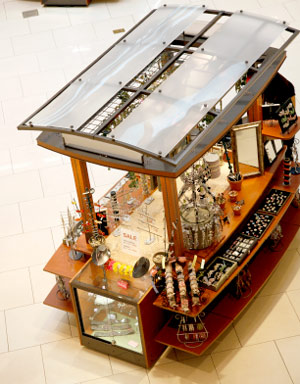 The exception to the rule are the carts that are selling jewelry or eyeglass cleaner. As you walk by, you will almost always be approached by someone who asks, “Excuse me, ma’am, would you allow me to clean your rings?” or “Excuse me, sir, can I clean your eyeglasses for you?.” I would venture to say that the people that work these carts have been given some training and some incentive. Not only that, I’ll bet that they sell much more of their product than the carts staffed by distracted teens.
The exception to the rule are the carts that are selling jewelry or eyeglass cleaner. As you walk by, you will almost always be approached by someone who asks, “Excuse me, ma’am, would you allow me to clean your rings?” or “Excuse me, sir, can I clean your eyeglasses for you?.” I would venture to say that the people that work these carts have been given some training and some incentive. Not only that, I’ll bet that they sell much more of their product than the carts staffed by distracted teens.
My personal favorite is the one demonstrating and selling the foam airplanes that come right back to you when you throw them. Usually, two young people are constantly throwing the planes and they always come right back to them. Just the activity alone makes you stand there and watch, which greatly increases the chances you’ll buy something.
So how does all of this relate to trade shows?
Even though the situations are completely different, there is one common factor. The buyers in each case are human beings. Most human beings respond to similar stimulus. Get the people that work your exhibit to approach prospects with as much energy as the people selling jewelry cleaner. Have some activity in your booth like the people throwing foam airplanes. I’ll bet you’ll see a big improvement in your trade show ROI.
The Low Down on Trade Show Exhibit Layouts
There are ins and outs and pros and cons to all the various types of trade show booth layouts, and determining which layout will deliver the best results for your company can be a difficult task. Evaluating your company’s needs and objectives will be your first step in determining which exhibit floor plans will work best for you.
 Let’s take a quick look at some of the more popular tradeshow exhibit layouts and the pros and cons of each to make that decision easier. Keep in mind, however, that variables exist between each layout type. Exhibitors can change each layout’s components, size, and positioning and mix and match layouts and elements to suit different situations.
Let’s take a quick look at some of the more popular tradeshow exhibit layouts and the pros and cons of each to make that decision easier. Keep in mind, however, that variables exist between each layout type. Exhibitors can change each layout’s components, size, and positioning and mix and match layouts and elements to suit different situations.
Classic Diamond.
Consists of a large, central structure with a series of independent elements (kiosks, demo stations, graphics, product displays) surrounding it.
Pros: This layout offers a strong visual presence, and its simplicity and lack of walls helps draw in visitors. Also works well for displaying multiple small products.
Cons: The layout’s central structure blocks view across the booth and offers only one spot for a single, high-impact statement or slogan. As far as traffic, this layout requires careful staffing to encourage visitors to explore the whole booth.
Centerpiece.
Typically used when one message or product needs to be featured; all other elements are directed toward one main focal point.
Pros: This layout offers easy access to focal point of booth and offers great impact for main marketing message or slogan. Allows easy access to main focus of booth.
Cons: This layout type offers little flexibility over time and single focus makes it hard to hold attendees’ interest for very long. Central focus of exhibit can attract so much traffic to cause congestion.
Theater.
The underlying purpose of this layout is to show some form of a presentation. Rather than walls, it uses dividers along the sides and demo stations or kiosks along the back.
Pros: Layout drives all attention toward presentation and openness encourages visitors who shun enclosed presentations. Allows strong medium for message delivery and partitions can display smaller, tangent messages.
Cons: Singular focus prevents highlighting multiple products. Offers no capture effect and quick exits after presentations difficult to prevent.
Club.
Also referred to as a closed exhibit, this layout type uses some type of material to create a fully or semi-enclosed environment within the booth space.
Pros: Interior offers quiet off-floor environment and exterior walls can attract attention and deliver messaging. Allows complete control over entry and exit of visitors. Exhibit walls offer lots of space for graphics.
Cons: Attendees can’t see main focus until they step inside and limited entrances discourage walk-up traffic. Main entrance clogs easily and confusion can result from too many messages.
Random Display.
This layout deconstructs formal floor plans in an effort to look unique and consists of an arbitrary arrangement of shapes, activities and elements.
Pros: Allows use of multiple products and presentation media. Permits many levels of messaging.
Cons: Prevents highlighting one central focus and multiple messages can cause chaos that work against proper message delivery. Confusing layout can be difficult to navigate and traffic can clog at focal point.
Plaza.
All large structures are pushed to the aisles to create an open, inviting environment in the center for casual conversation and product displays.
Pros: Offers open and inviting interior space that allows all elements to be seen at once. Openness encourages attendees to wander and explore; visitors are free to leave as easily as they enter. Allows placement of large graphic displays.
Cons: Doesn’t offer one main focal point. Central elements can draw too much traffic, causing congestion.
Trade Show Exhibit Design Secrets: The Star of the Show
Your trade show exhibit should be designed to focus on your products, not your display. This doesn’t mean that the graphics need to be subdued or your booth needs to be boring. It means that the graphics, colors and lighting should be integrated to draw attention to your product.
Make your products the star of your trade show display
Don’t be afraid to be bold. Use high-impact colors that will stand out at a distance. A bland  color palette will blend into the background and not draw attention or focus the audience on your product.
color palette will blend into the background and not draw attention or focus the audience on your product.
Be brand-true. You should support and build on your brand campaign. But your exhibit also needs to go beyond the brand message and convey what your company is about.
Use exhibit graphics to draw in high-potential prospects for your product. People can “read” images faster than they can read words. Use images to clearly define what your company does and to attract your target customers. Images are also an effective way to filter out people who are not likely buyers so that they do not take up your staff’s valuable trade show time.
Limit your product display to focus on signature products. No matter how large your trade show exhibit space is, it is easy to dilute the overall impact of your display with visual clutter from too many products. If you want to tell an assortment story, organize your products into groups. Trade show attendees are most interested in new products and your most important products. You can use collateral materials or electronic product directors to provide information on your full product offering.
Use lighting to spotlight what is important. Lighting can accentuate the most important information and make your products stand out. Be creative in how you use lighting to draw attention to your products. Backlighting graphics, for example, can increase initial awareness and recall of your exhibit.
The design of your trade show display can draw attention to your product. The right graphics, colors, and lighting can grab the attention of your best prospects and make your trade show exhibit a true product showcase.
Watch Out For End Cap Booth Spaces At Your Next Trade Show
In a grocery store or other retail shops, it is very desirable to have your product placed on an “end cap” (the very end of an aisle). This position provides a great deal more traffic, keeps you from being right next to your competition, and has been proven to increase sales.
Many marketing managers take this experience in retail and put it to use in selecting exhibit space at a trade show, choosing “end cap” spaces, or “peninsula booths” in trade show jargon. This is not always a wise decision. If you look closely at the floor plan of a trade show, you’ll see that the vast majority of these spaces face cross aisles. Most cross aisles are not a great choice for traffic. Attendees typically use cross aisles to get from one main aisle to another, which means they are looking towards their destination and may completely miss your display.
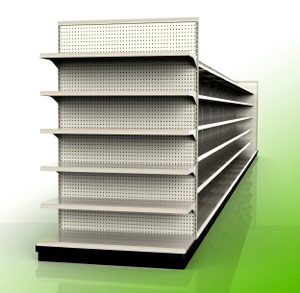 Another consideration is the display restrictions that apply to peninsula booths. Most of these spaces are 20′ x 20′. Standard tradeshow booth space rules provide for a 5′ line of sight area along main aisles. This means that you cannot install displays over waist high within 5 feet of an aisle that is adjacent to another exhibit. In the case of a peninsula booth, you will lose about a quarter of your exhibit space because of this restriction. This needs to be considered as you design your booth and may mean that you will be unable to use some or all of your existing display.
Another consideration is the display restrictions that apply to peninsula booths. Most of these spaces are 20′ x 20′. Standard tradeshow booth space rules provide for a 5′ line of sight area along main aisles. This means that you cannot install displays over waist high within 5 feet of an aisle that is adjacent to another exhibit. In the case of a peninsula booth, you will lose about a quarter of your exhibit space because of this restriction. This needs to be considered as you design your booth and may mean that you will be unable to use some or all of your existing display.
The best thing to do is to carefully review the tradeshow rules before selecting an exhibit space. In my experience, you should select a space based on where you think you’ll get the most traffic, and while it might, the end cap doesn’t always come out on top.
Tradeshow Exhibit Packaging 101
Tradeshow exhibits can be packaged in a variety of ways including:
- Crates
- Skids or pallets
- Molded plastic cases
- Or no packaging at all, (pad wrapped)
Crates
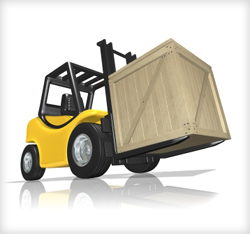 The vast majority of custom or modular trade show exhibits are packed in crates. Properly constructed crates reduce the likelihood of damage and can greatly enhance the useful life of the display. The downside of crates is the cost (usually around $1,500 each for average sizes) and the weight of the crates (around 300 pounds each). While properly designed crates will take full advantage of the space in a truck, their weight will add cost to shipping (if based on weight) and material handling. Crated displays can usually avoid the “special handling” fees charged for material handling.
The vast majority of custom or modular trade show exhibits are packed in crates. Properly constructed crates reduce the likelihood of damage and can greatly enhance the useful life of the display. The downside of crates is the cost (usually around $1,500 each for average sizes) and the weight of the crates (around 300 pounds each). While properly designed crates will take full advantage of the space in a truck, their weight will add cost to shipping (if based on weight) and material handling. Crated displays can usually avoid the “special handling” fees charged for material handling.
Skids or Pallets
Skids are essentially crates without sides or a top. They are easily moved with a forklift and are commonly used when the items are too big or bulky to fit in a crate, e.g., structural beams, truss, furniture and rolls of carpet and padding. The disadvantages to skids are that they are difficult or impossible to stack, increasing storage and shipping costs, and they do not afford the protection that crates do. Skids do reduce shipping weight when compared to crates.
Molded Cases
Manufactured exhibit systems and portable displays often pack in molded plastic cases. In some instances, the cases are compartmentalized to secure the individual parts of the display. Manufactured displays break down into smaller pieces that lend themselves to being packed into these pre-engineered containers. They are much lighter than crates and are very durable. Some displays that are packed in multiple molded cases are then stacked on skids for ease of handling on the show floor.
Pad Wrapped
Some exhibits are shipped as individual pieces without crates or skids. The items are wrapped with packing pads and loaded into moving vans just like household goods are handled. This process adds considerable time to the packing, loading and unloading process and increases the likelihood of damage, but might be worth considering in some cases.
Trade show display packaging is not as simple as it might seem, as there are many variables involved in deciding which method will be most cost-effective. Your exhibit supplier should be able to describe how your exhibit is going to be packaged and why. A detailed cost comparison of each option, accounting for all potential areas of impact on cost, might be of value before you make a decision.
Marketing Strategy Session: Tracking Trade Show ROI
Today, I read a survey and was shocked to learn that fewer than 20% of trade show exhibitors track the ROI (Return on Investment) from their trade show campaigns. After I thought about it a moment, however, I realized that this is not that surprising. Most sales and marketing activities are not carefully evaluated so why should a trade show be any different?
Why track Trade Show ROI?

Trade shows are one of the most productive ways to reach new qualified prospects and generate significant incremental sales. If you do not track and measure the success of the show, your company may make the decision to eliminate a critical trade show event and loose sales without ever knowing it mattered. Beyond this, there are other reasons to analyze trade show results and determine how successful you are. An ROI analysis can provide you with information about the most productive elements of your trade show campaign and help you optimize future trade show efforts.
How to measure Trade Show ROI
The first step is to gather the data needed to calculate the ROI.
- Determine the total costs of trade show and directly associated events. This is the Trade Show Marketing Expense. Include everything include staff, travel, collateral material and follow-up sales and marketing expenses.
- Estimate the Total Incremental Sales from the show. This is… Total show sales plus New leads in the pipeline and expected sales from these new leads usually based on historic conversion rates plus Incremental sales from existing customers that are the result of the trade show effort.
- List the other benefits of the show, including:
Strengthening relationships with current clients.
Increasing brand awareness.
Consumer education efforts.
New product introductions.
Investor relations and improving perception of your company in the financial community.
New market introductions.
Public relations including editorial coverage.
Competitive intelligence.
Customer insight and research.
Once the data is collected it is simple to calculate the ROI.
Total Incremental Sales times Net Margin Rate = Net Margin Dollars
Net Margin Dollars less Trade Show Marketing Expense = Profit Contribution
Profit Contribution divided by Trade Show Marketing Expense = ROI
(typically expressed as a percentage.)
So, for example if…..
Total Incremental Sales = $3.5 million
Net Margin Rate = 16%
Trade Show Marketing Expense = $230,000
Then the ROI would be…..
Net Margin Dollars: $3.5 million times 16% = $560,000
Profit Contribution: $560,000 less $230,000 = $330,000
ROI: $330,000 divided by $230,000 = 143%
So in this example, the trade show marketing ROI was 143% plus any other benefits like those listed in #3 above.
What’s your tradeshow ROI? Have you tracked it? Do you plan to?
Choosing a Tradeshow Display Shipping Carrier
When shipping tradeshow displays, you generally have two types of carriers to choose from:
- Van lines like Atlas, Bekins, United, Allied, etc. who also do moving of high-value products and household goods.
- Motor freight companies who move commodities, manufactured goods, etc.
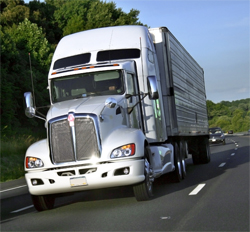 If your exhibit is palletized or crated, you have the option of shipping via van lines or motor freight. If your materials are not crated (also known as “loose” or “pad wrapped”) you must go with a van line.
If your exhibit is palletized or crated, you have the option of shipping via van lines or motor freight. If your materials are not crated (also known as “loose” or “pad wrapped”) you must go with a van line.
Motor freight companies operate on a hub system very much like the airlines, so displays that are loaded on a truck at your facility may be transferred one, two or even more times before reaching their final destination. This extra handling exposes your materials to more wear and tear and greatly increases the possibility of damage. Motor freight shipping costs are usually calculated by weight, although larger, lightweight items may be subject to a different cost calculation called “dimensional weight”.
The advantage to van line shipments is that the trucks are usually going directly from your warehouse to the convention center, so materials are less likely to be transferred from one truck to another. Moving vans use air ride trailers that cushion bumps along the way. Van lines almost always charge by the amount of floor space in the trailer that your materials require.
Total shipping cost can vary a great deal. It is generally assumed that motor freight is less expensive but that is not always the case. Check with your traffic department to see what kind of discounts your company gets from various carriers, make sure that your carrier has tradeshow specific experience and request quotes.
Make sure that your chosen carrier provides you with a way to track your shipment and verify delivery. Last, but certainly not least, be sure to ask your carrier about insurance coverage. The standard coverage that they provide is usually less than $1.00 per pound which won’t even cover the replacement of the crates, let alone the contents.
Do your homework and you can minimize cost. Or, leave the homework to us – we’ll take care of knowing where your tradeshow display is, where it needs to go, and getting everything shipped on time. With our national network of facilities and climate-controlled environments, we are always close by, so shipping your tradeshow exhibits is never a problem. Let’s talk.
Buying Versus Renting Tradeshow Exhibits
Many organizations don’t realize they can test the waters when it comes to tradeshow exhibits, renting before they commit to buy. For some companies, however, especially those that know they will be exhibiting multiple times throughout the year, buying might be the best and most cost-efficient option.
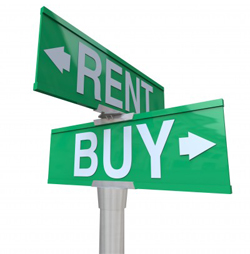 Let’s take a look at some of the rationale behind why companies choose to rent over buying and vice versa. There are pros and cons to both approaches.
Let’s take a look at some of the rationale behind why companies choose to rent over buying and vice versa. There are pros and cons to both approaches.
Why rent?
If your company has never before exhibited at a trade show or are fairly inexperienced with trade shows, you might want to consider renting the first time around. After your first experience, you’ll have a much better idea of what your company’s needs will be for future shows in terms of space, size, design, functionality, etc. You’ll also have a better sense of whether participating in trade shows will help your company meet its marketing objectives.
Renting the first time will also give you the opportunity to check out what your competitors are doing as far as exhibits. You don’t want to have the exact same booth as your competitor. Your company needs to stand out amidst the sea of competing exhibits to drive traffic and draw in prospective customers.
Another reason to rent may be that your company simply cannot reasonably afford to buy its own exhibit. Tradeshow booths can cost thousands of dollars, so unless your company has a proven track record of success at trade shows, it may be wiser to rent. Hopefully, after a few successful forays into trade shows, your organization will be able to financially justify the purchase of its own trade show booth.
Why buy?
If your company regularly exhibits at trade shows, even if it’s twice a year, then it may not make sense not to own your own booth. Rental fees quickly add up, so if your company is committed to participating in multiple trade shows or events throughout the year, purchasing your own booth makes good financial sense.
Experience at past trade shows also means you have a solid understanding of what type of booth your company would require; overall footprint and layout, the size of actual booth space your company is reserving for each show, and overall type of design. Chances are you also have checked out your competition’s trade show exhibits and know what your company will need in terms of its own booth to stand out.
Keep in mind that many exhibit companies will allow you to put the money you spend on a booth rental towards the ultimate purchase of a booth. In this way, renting before buying is a great way to experiment with different booth designs and see what works for your company before diving in and making the investment in your own tradeshow booth.
Archives
- July 2021
- June 2021
- May 2021
- April 2021
- October 2018
- September 2018
- August 2018
- July 2018
- June 2018
- May 2018
- April 2018
- March 2018
- February 2018
- January 2018
- December 2017
- November 2017
- October 2017
- September 2017
- August 2017
- July 2017
- June 2017
- May 2017
- April 2017
- March 2017
- February 2017
- January 2017
- December 2016
- November 2016
- October 2016
- September 2016
- August 2016
- July 2016
- June 2016
- May 2016
- April 2016
- March 2016
